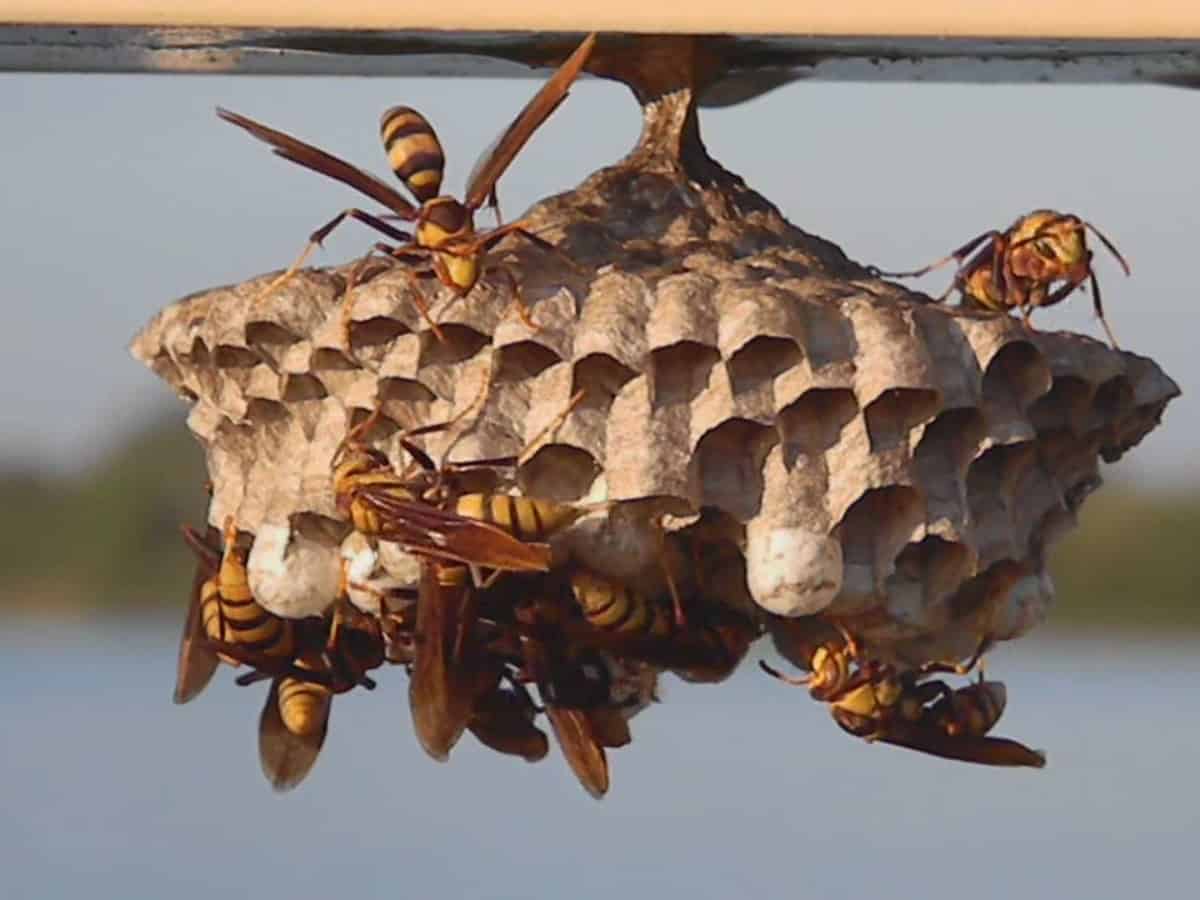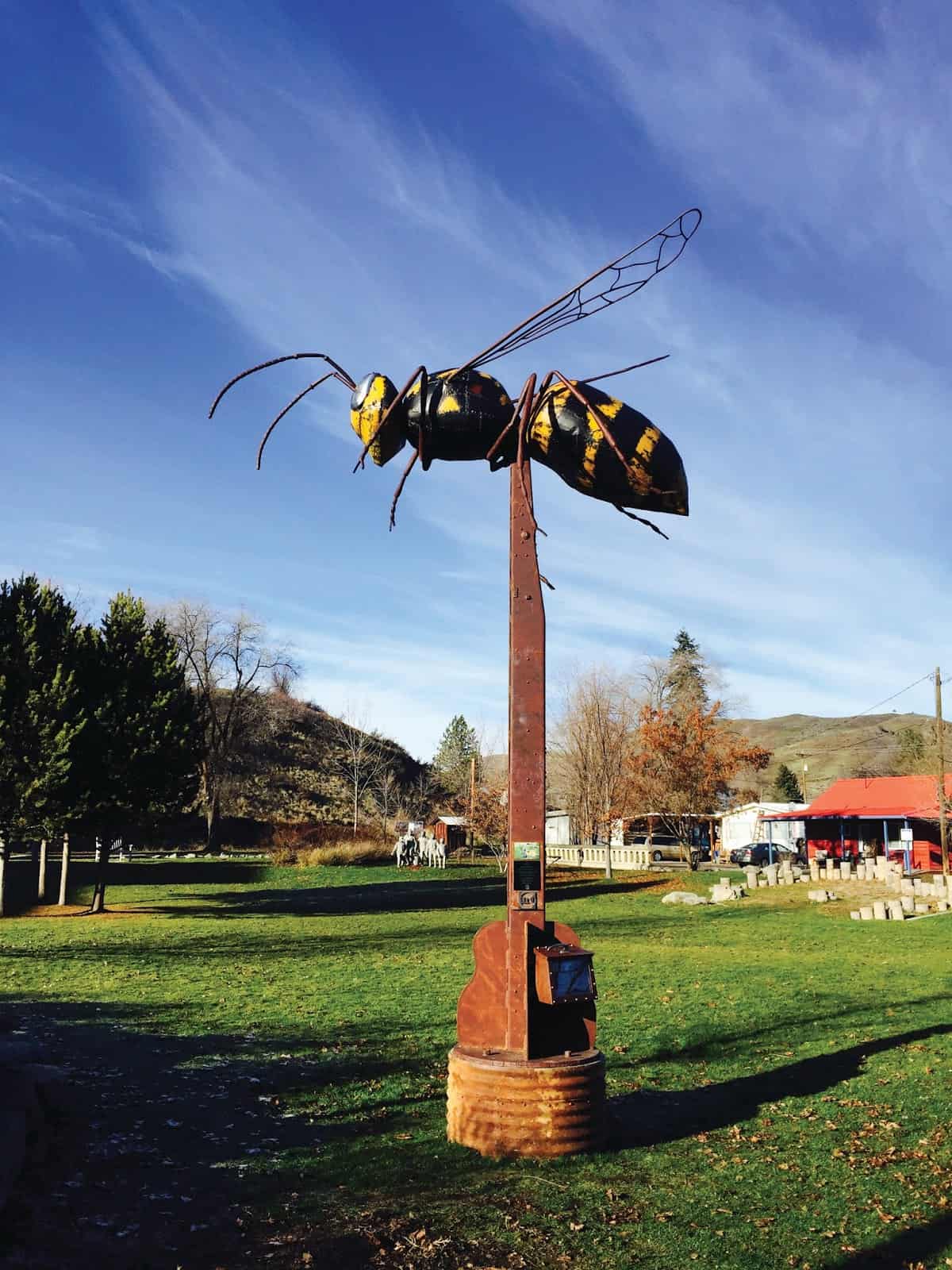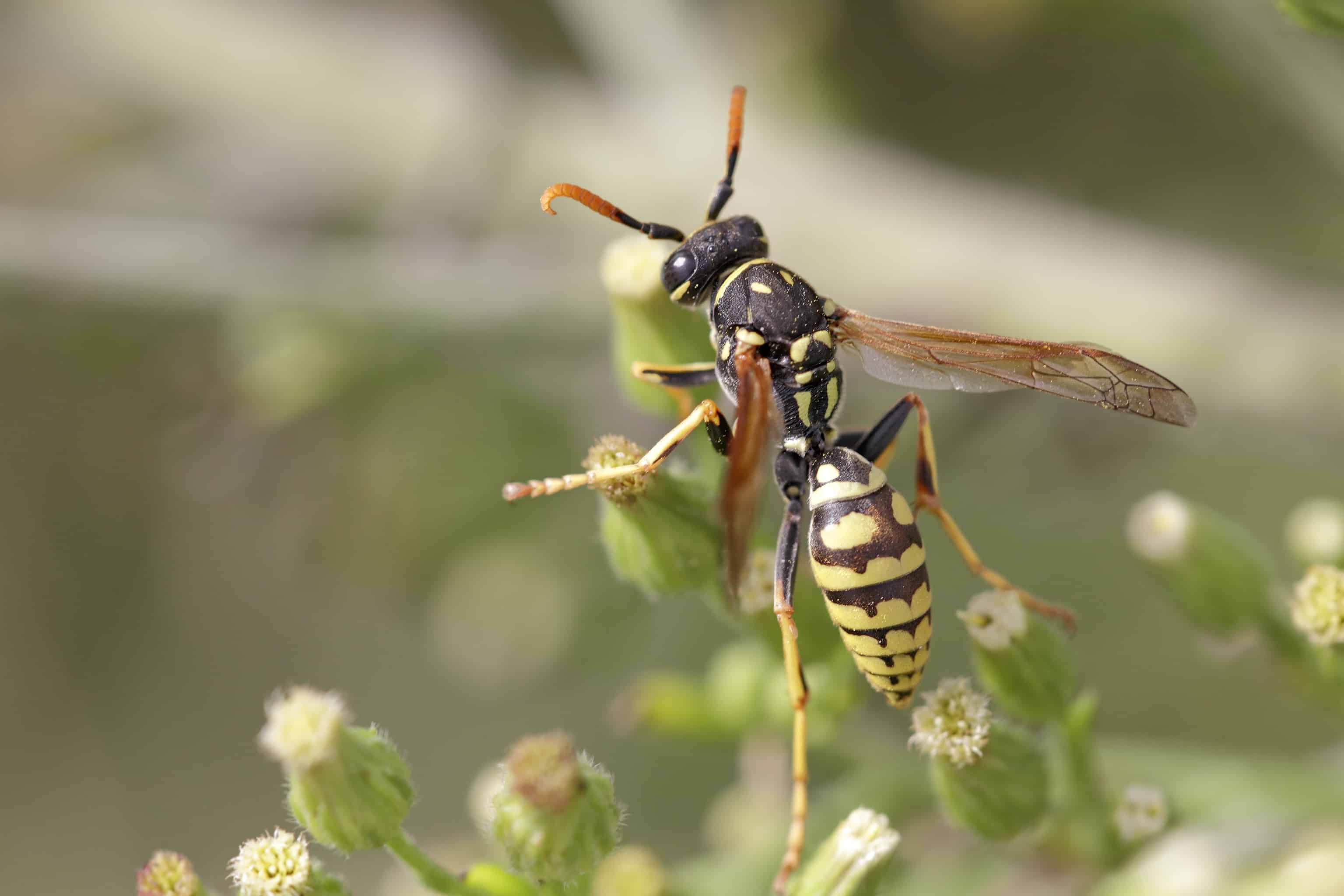
Between Fear and Fascination: Studying Vespids in the North Cascades
When I’d chosen to write a natural history project on wasps, the only lead I had was that maybe I should pay a visit to Twisp. There was rumor that Twisp meant “wasp” in Interior Salish, that there was a giant statue of a yellowjacket in the center of town, and the local high school mascot was the Hornets. Starting off knowing as little about wasps as I did, that was good enough for me. I drove an hour and a half east over the pass to do my own investigation.
This was not my first time in Twisp. I’d gone through years ago on my way up from Walla Walla to lead backpacking and canoeing trips in Ross Lake, but I’d only ever stopped at Hank’s grocery store and seen the wonders of taxidermy that lie within. We had gone as a cohort to the Methow Valley for the field portion of our natural history course, and it was only then that I’d tried my first Cinnamon Twisp. But this whole wasp thing was news to me.

Making the link that yellowjackets and bees are related by their taxonomic order Hymenoptera, my first stop was the Twisp Farmer’s Market. I was lucky, as this was the second to last weekend that it would be running before shutting down for the winter. My first order of business was buying and inhaling some delicious tamales. Then I started chatting up the honey vendors—they had to know something, right?
“Oh yeah, yellowjackets are terrible for bees,” the first vendor I talked to said. Yellowjackets are predators, and specialize in killing anything insect. Sometimes they even eat other wasps, so what a boon it must be for a hunting wasp to come across a bunch of European honeybees!
One protective measure beekeepers make to help their bees is to gradually make the hive entrance smaller and smaller, so that it becomes easily defensible after meat-and-honey-hungry wasps. As well, some beekeepers are looking into tending to feral bee colonies for greater defensive adaptations and resistance to colony collapse disorder. I went to a second vendor who told me that his and other bee colonies suffer from the Varroa destructor mite, which takes a significant percentage of bees each year. He had a curiosity for the spread of the Varroa mite from honeybees to native bee and wasp populations. That was one to ponder—insects giving parasites to other insects.

Having learned more than I usually do at the farmer’s market, I walked away with some raw honey. I took a second to admire the metal sculpture of the yellow jacket right next to the farmer’s market and sauntered down to Cinnamon Twisp for a Cinnamon Twisp. (I had to enjoy myself a little while out here!) My next stop was to stop at the local interpretive center. It was there I learned quite a bit about how Twisp became Twisp.
First, Twisp was called Gloverstown, after the founder, but then it reverted to Twisp when H.C. Glover was bought out. Twisp was the name of the nearby river, and the name stuck. I’d met the docent weeks before, when the C18 cohort came by to learn about the indigenous history of the Methow Valley, to hear a story in the pit house outside, and to eat loads of smoked salmon at an impromptu picnic. She pointed me in the direction of some resources and chatted with me quite a bit herself. The river’s name came from the Interior Salish name for the place: tx w ec’p. Think of “Twisp” as onomatopoeia, that yellowjackets are things that go “Twisp!”
When the salmon runs come up here, they fork off between the Methow and Twisp Rivers, and when the salmon die there is a lot of dead fish washed up at the confluence. The yellowjackets come en masse to avail themselves of the free meat.
Talking with the beekeepers, I found myself a bit pessimistic about my project. Was I just defending a total scourge of a species? I found optimism in her ambivalence toward yellowjackets. “They don’t bug you if you don’t bug them,” the docent told me. “You find out fast enough if you’re close to a nest. And if you want to have a picnic on a nice August day, just leave a little bit of smoked salmon off a little bit so they can eat, too.”
Schmidt Sting Pain Index
The Schmidt Sting Pain Index is a pain scale rating the relative pain of stings of different bees, wasps and ants (Hymenoptera). The author, Justin O. Schmidt, is an entomologist at the Carl Hayden Bee Research Center, who claims to have been (intentionally) stung by the majority of stinging Hymenoptera.
The pain index begins at 0 for stings that are completely ineffective against humans, moves through 2, common bees and wasps, and tops out at 4 for the most painful stings. Schmidt’s 1990 article classifies the stings of 78 species and 41 genera of Hymenoptera in language more reminiscent of wine-tasting than insect physiology.
1.0 Sweat bee: Light, ephemeral, almost fruity. A tiny spark that has singed a single hair on your arm.
1.2 Fire ant: Sharp, sudden, mildly alarming. Like walking across a shag carpet and reaching for the light switch.
1.8 Bullhorn acacia ant: A rare, piercing, elevated sort of pain. Someone has fired a staple into your cheek.
2.0 Bald-faced hornet: Rich, hearty, slightly crunchy. Similar to getting your hand mashed in a revolving door.
2.0 Yellowjacket: Hot and smoky, almost irreverent. Imagine W. C. Fields extinguishing a cigar on your tongue.
2.x Honey bee and European hornet: Like a matchhead that flips off and burns on your skin.
3.0 Red harvester ant: Bold and unrelenting. Somebody is using a drill to excavate your ingrown toenail.
3.0 Paper wasp: Caustic and burning. Distinctly bitter aftertaste. Like spilling a beaker of hydrochloric acid on a paper cut.
4.0 Tarantula hawk: Blinding, fierce, shockingly electric. A running hair drier has been dropped into your bubble bath.
4.0+ Bullet ant: Pure, intense, brilliant pain. Like fire-walking over flaming charcoal with a 3-inch rusty nail in your heel.
The Schmidt Pain Index is included purely for educational and entertainment purposes. The North Cascades Institute and this graduate student do not recommend being stung by of any of the above species. Please engage with Hymenoptera carefully and at your own risk. Thanks for reading!
This post was researched and written by Adam Brayton for the Northwest Natural History course as part of the Institute’s Graduate M.Ed. program. North
Cascades Institute has not extensively fact-checked the information contained herein and recommends researching other sources of information to enhance one’s understanding of the topic.

